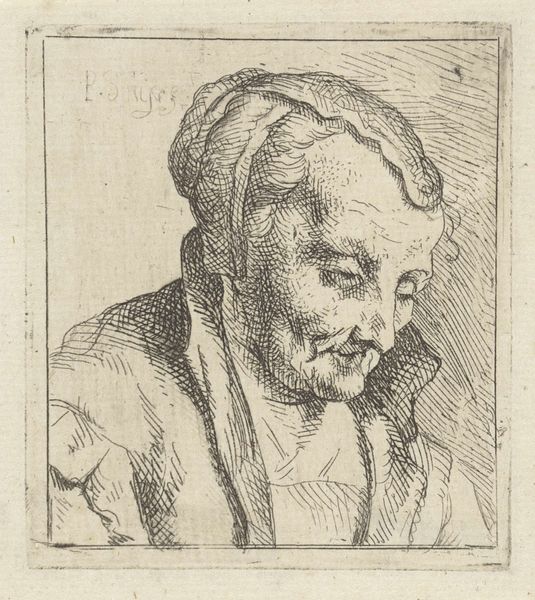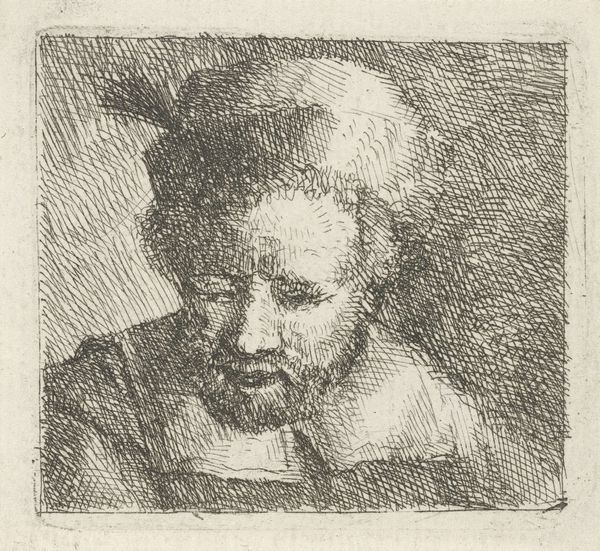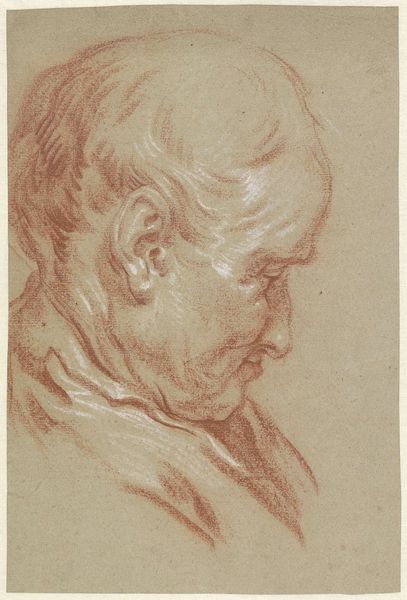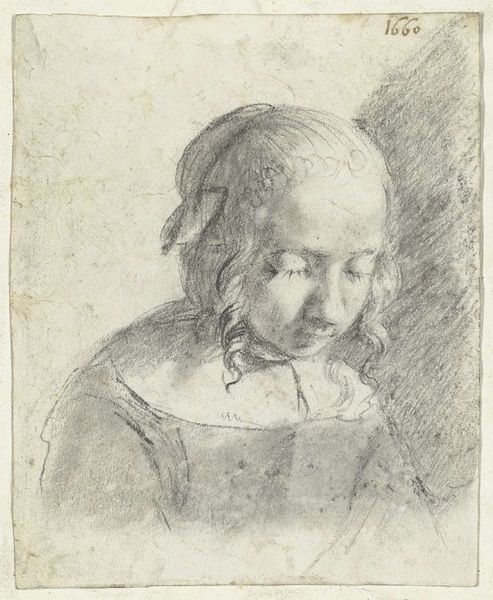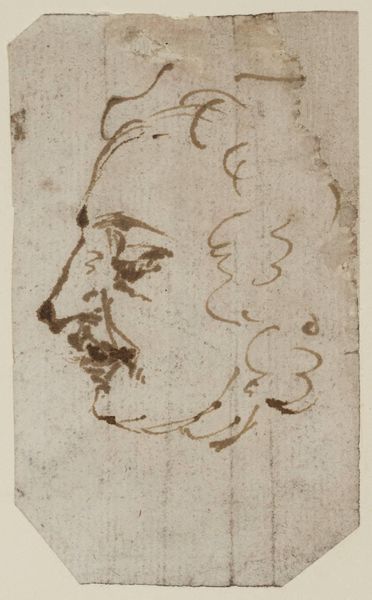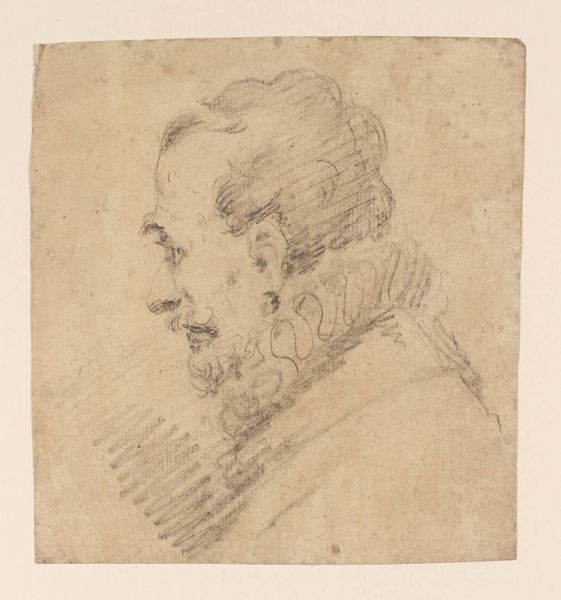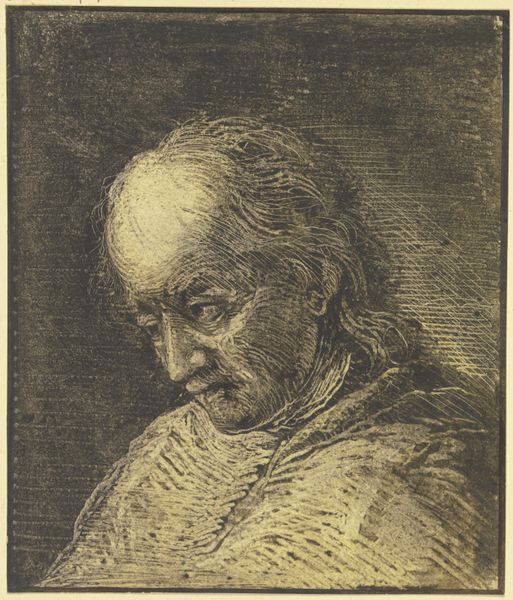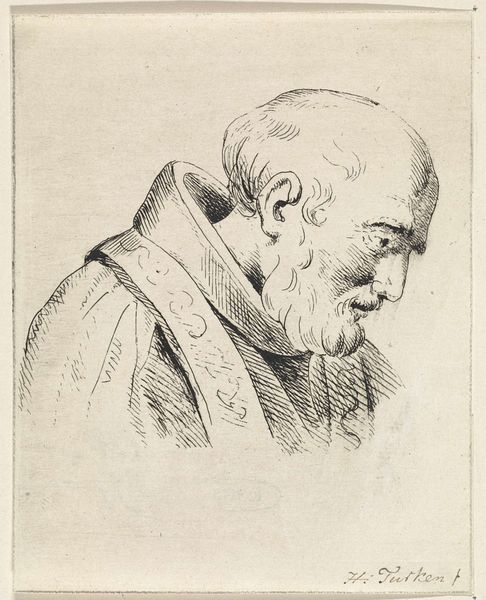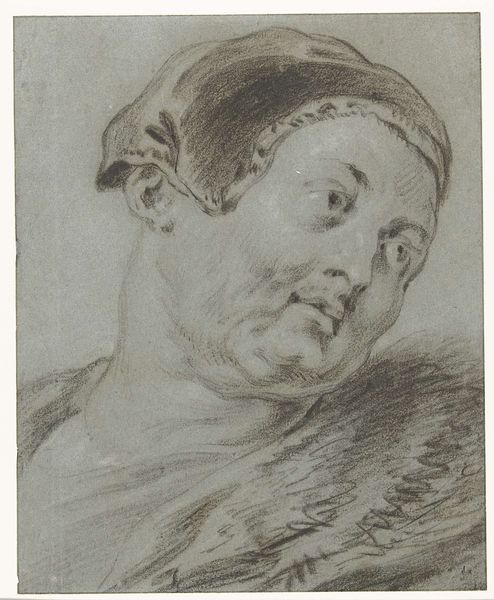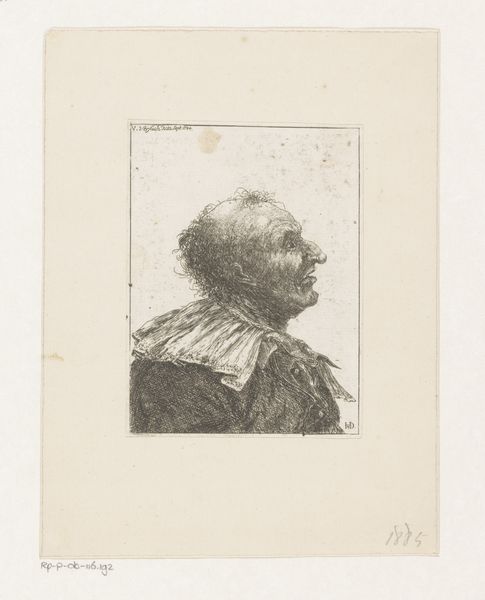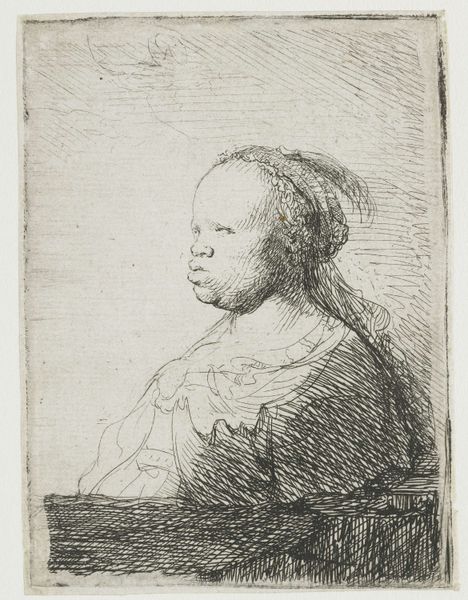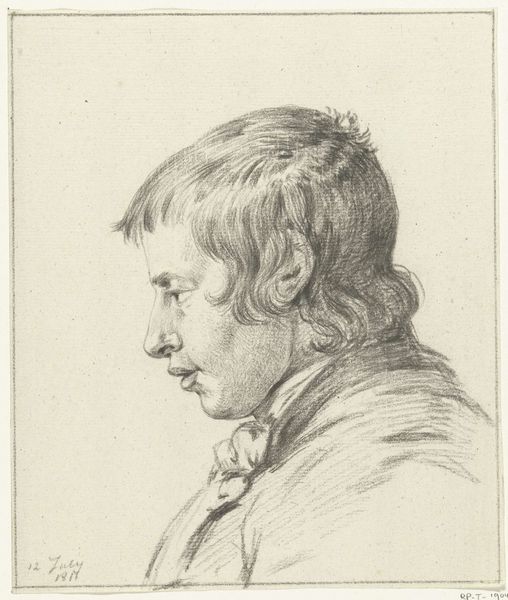
drawing, pencil
#
portrait
#
pencil drawn
#
drawing
#
pencil sketch
#
pencil
#
academic-art
Dimensions: height 85 mm, width 60 mm
Copyright: Rijks Museum: Open Domain
Curator: Here we have "Hoofdstudie van Jean Baptiste Coclers", a head study rendered in pencil by Louis Bernard Coclers. The work dates somewhere between 1756 and 1817. It's a delicately executed drawing, capturing the sitter in quiet repose. What do you make of it? Editor: The immediacy is striking. You can almost feel the pressure of the pencil on the paper, the scratching and layering to build form. It speaks to the labor and the practice embedded within this genre of study. Curator: Absolutely, and considering the academic tradition Coclers worked within, the head becomes a symbol, a stand-in for intellect and the Enlightenment's emphasis on reason and knowledge. Think of all the philosophers, scientists, and artists whose heads were similarly studied. Editor: It makes me think about the ready availability of paper and pencils during the 18th century, facilitating a whole culture of sketching. Not just finished artworks, but this working through, the constant refinement of technique. Curator: I'm drawn to the symbolism of the downward gaze. The sitter appears introspective, perhaps melancholic. In psychological terms, the lowered head might even suggest introspection, a withdrawal from the external world. Editor: True, but it's also interesting to consider what type of paper he’s working on. Was it mass produced, expensive imported stuff, or recycled materials? All these things would affect how he applied the pencil. Curator: An important point to keep in mind. By examining such material conditions, one could piece together more specific histories—how access shaped technique, perhaps. The image acts as a signifier of knowledge. The materials speak to their own means of cultural dissemination, education, and value. Editor: It certainly humanizes art production. You can see the trace of a hand, feel the physical act of the maker through the application of material. This invites further analysis. Curator: Yes, it all makes you look beyond the surface! I think considering Coclers’ place in a lineage of such studies expands the meaning in some powerful way. Editor: Well said. It highlights an avenue of art creation too often overlooked by the "art establishment," revealing it to have incredible appeal to the viewer!
Comments
No comments
Be the first to comment and join the conversation on the ultimate creative platform.
